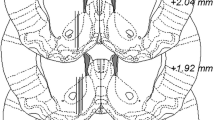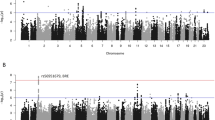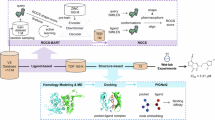Abstract
Alcoholism is one of the most prevalent neuropsychiatric diseases, having an enormous health and socioeconomic impact. Along with a few other medications, acamprosate (Campral—calcium-bis (N-acetylhomotaurinate)) is clinically used in many countries for relapse prevention. Although there is accumulated evidence suggesting that acamprosate interferes with the glutamate system, the molecular mode of action still remains undefined. Here we show that acamprosate does not interact with proposed glutamate receptor mechanisms. In particular, acamprosate does not interact with NMDA receptors or metabotropic glutamate receptor group I. In three different preclinical animal models of either excessive alcohol drinking, alcohol-seeking, or relapse-like drinking behavior, we demonstrate that N-acetylhomotaurinate by itself is not an active psychotropic molecule. Hence, the sodium salt of N-acetylhomotaurinate (i) is ineffective in alcohol-preferring rats to reduce operant responding for ethanol, (ii) is ineffective in alcohol-seeking rats in a cue-induced reinstatement paradigm, (iii) and is ineffective in rats with an alcohol deprivation effect. Surprisingly, calcium salts produce acamprosate-like effects in all three animal models. We conclude that calcium is the active moiety of acamprosate. Indeed, when translating these findings to the human situation, we found that patients with high plasma calcium levels due to acamprosate treatment showed better primary efficacy parameters such as time to relapse and cumulative abstinence. We conclude that N-acetylhomotaurinate is a biologically inactive molecule and that the effects of acamprosate described in more than 450 published original investigations and clinical trials and 1.5 million treated patients can possibly be attributed to calcium.
Similar content being viewed by others
Log in or create a free account to read this content
Gain free access to this article, as well as selected content from this journal and more on nature.com
or
References
Bachteler D, Economidou D, Danysz W, Ciccocioppo R, Spanagel R (2005). The effects of acamprosate and neramexane on cue-induced reinstatement of ethanol-seeking behavior in rat. Neuropsychopharmacology 30: 1104–1110.
Bell RL, Rodd ZA, Lumeng L, Murphy JM, McBride WJ (2006). The alcohol-preferring P rat and animal models of excessive alcohol drinking. Addict Biol 11: 270–288.
Boismare F, Daoust M, Moore N, Saligaut C, Lhuintre JP, Chretien P et al (1984). A homotaurine derivative reduces the voluntary intake of ethanol by rats: are cerebral GABA receptors involved? Pharmacol Biochem Behav 21: 787–789.
Chabenat C, Chretien P, Daoust M, Moore N, Andre D, Lhuintre JP et al (1988). Physicochemical, pharmacological and pharmacokinetic study of a new GABAergic compound, calcium acetylhomotaurinate. Methods Find Exp Clin Pharmacol 10: 311–317.
Chau P, Höifödt-Lidö H, Löf E, Söderpalm B, Ericson M (2010a). Glycine receptors in the nucleus accumbens involved in the ethanol intake-reducing effect of acamprosate. Alcohol Clin Exp Res 34: 39–45.
Chau P, Stomberg R, Fagerberg A, Söderpalm B, Ericson M (2010b). Glycine receptors involved in acamprosate's modulation of accumbal dopamine levels: an in vivo microdialysis study. Alcohol Clin Exp Res 34: 32–38.
Cowen MS, Adams C, Kraehenbuehl T, Vengeliene V, Lawrence AJ (2005). The acute anti-craving effect of acamprosate in alcohol-preferring rats is associated with modulation of the mesolimbic dopamine system. Addict Biol 10: 233–242.
De Witte P, Littleton J, Parot P, Koob G (2005). Neuroprotective and abstinence-promoting effects of acamprosate: elucidating the mechanism of action. CNS Drugs 19: 517–537.
Emsley CL, Gao S, Li Y, Liang C, Ji R, Hall KS et al (2000). Trace element levels in drinking water and cognitive function among elderly Chinese. Am J Epidemiol 151: 913–920.
Erickson CK, Tyler TD, Harris RA (1978). Ethanol: modifications of acute intoxication by divalent cations. Science 199: 1219–1221.
Harris BR, Prendergast MA, Gibson DA, Rogers DT, Blanchard JA, Holley RC et al (2002). Acamprosate inhibits the binding and neurotoxic effects of trans-ACPD, suggesting a novel site of action at metabotropic glutamate receptors. Alcohol Clin Exp Res 26: 1779–1793.
Heyser CJ, Schulteis G, Durbin P, Koob GF (1998). Chronic acamprosate eliminates the alcohol deprivation effect while having limited effects on baseline responding for ethanol in rats. Neuropsychopharmacology 18: 125–133.
Hopf FW, Simms JA, Chang SJ, Seif T, Bartlett SE, Bonci A (2011). Chlorzoxazone, an SK-type potassium channel activator used in humans, reduces excessive alcohol intake in rats. Biol Psychiatry 69: 618–624.
Kiefer F, Jahn H, Tarnaske T, Helwig H, Briken P, Holzbach R et al (2003). Comparing and combining naltrexone and acamprosate in relapse prevention of alcoholism: a double-blind, placebo-controlled study. Arch Gen Psychiatry 60: 92–99.
Kosinski CM, Standaert DG, Counihan TJ, Scherzer CR, Kerner JA, Daggett LP et al (1998). Expression of N-methyl-D-aspartate receptor subunit mRNAs in the human brain: striatum and globus pallidus. J Comp Neurol 390: 63–74.
Lidö HH, Marston H, Ericson M, Söderpalm B (2012). The glycine reuptake inhibitor Org24598 and acamprosate reduce ethanol intake in the rat; tolerance development to acamprosate but not to Org24598. Addict Biol 17: 897–907.
Litten RZ, Egli M, Heilig M, Cui C, Fertig JB, Ryan ML et al (2012). Medications development to treat alcohol dependence: a vision for the next decade. Addict Biol 17: 513–527.
Lynch MA, Littleton JM (1983). Possible association of alcohol tolerance with increased synaptic Ca2+ sensitivity. Nature 303: 175–176.
Madamba SG, Schweitzer P, Zieglgänsberger W, Siggins GR (1996) Alcohol Clin Exp Res 20: 651–658.
Mann K, Kiefer F, Spanagel R, Littleton J (2008). Acamprosate: recent findings and future research directions. Alcohol Clin Exp Res 32: 1105–1110.
Mann K, Bladström A, Torup L, Gual A, van den Brink W (2013). Extending the treatment options in alcohol dependence: a randomized controlled study of as-needed nalmefene. Biol Psychiatry 73: 706–713.
Mark TL, Kassed CA, Vandivort-Warren R, Levit KR, Kranzler HR (2009). Alcohol and opioid dependence medications: prescription trends, overall and by physician specialty. Drug Alcohol Depend 99: 345–349.
Mason BJ, Heyser CJ (2010). Acamprosate: a prototypic neuromodulator in the treatment of alcohol dependence. CNS Neurol Disord Drug Targets 9: 23–32.
Mulholland PJ, Becker HC, Woodward JJ, Chandler LJ (2011). Small conductance calcium-activated potassium type 2 channels regulate alcohol-associated plasticity of glutamatergic synapses. Biol Psychiatry 69: 625–632.
O′Brien CC (1952). Experimental evidence in the treatment of alcoholism by intensive calcium therapy. J Am Osteopath Assoc 51: 393–394.
O'Brien CC (1964). Intensive calcium therapy as an initial approach to the psychotherapeutic relationship in the rehabilitation of the compulsive drinker. J Psychol 57: 125–129.
Rammes G, Mahal B, Putzke J, Parsons C, Spielmanns P, Pestel E et al (2001). The anti-craving compound acamprosate acts as a weak NMDA-receptor antagonist, but modulates NMDA-receptor subunit expression similar to memantine and MK-801. Neuropharmacology 40: 749–760.
Reilly MT, Lobo IA, McCracken LM, Borghese CM, Gong D, Horishita T et al (2008). Effects of acamprosate on neuronal receptors and ion channels expressed in Xenopus oocytes. Alcohol Clin Exp Res 32: 188–196.
Rehm J, Mathers C, Popova S, Thavorncharoensap M, Teerawattananon Y, Patra J (2009). Global burden of disease and injury and economic cost attributable to alcohol use and alcohol-use disorders. Lancet 373: 2223–2233.
Rösner S, Hackl-Herrwerth A, Leucht S, Lehert P, Vecchi S, Soyka M (2010). Acamprosate for alcohol dependence. Cochrane Database Syst Rev 8: CD004332.
Sanchis-Segura C, Spanagel R (2006). Behavioural assessment of drug-reinforcement and addictive features in rodents: an overview. Addict Biol 11: 2–38.
Scherzer CR, Landwehrmeyer GB, Kerner JA, Counihan TJ, Kosinski CM, Standaert DG et al (1998). Expression of N-methyl-D-aspartate receptor subunit mRNAs in the human brain: hippocampus and cortex. J Comp Neurol 390: 75–90.
Shaham Y, Shalev U, Lu L, De Wit H, Stewart J (2003). The reinstatement model of drug relapse: history, methodology and major findings. Psychopharmacology (Berl) 168: 3–20.
Spanagel R, Hölter SM, Allingham K, Landgraf R, Zieglgänsberger W (1996a). Acamprosate and alcohol: I. Effects on alcohol intake following alcohol deprivation in the rat. Eur J Pharmacol 305: 39–44.
Spanagel R, Putzke J, Zieglgänsberger W, Stefferl A, Schöbitz B (1996b). Acamprosate and alcohol: II. Effects on alcohol withdrawal in the rat. Eur J Pharmacol 305: 45–50.
Spanagel R, Pendyala G, Abarca C, Zghoul T, Sanchis-Segura C, Magnone MC et al (2005). The clock gene Per2 influences the glutamatergic system and modulates alcohol consumption. Nat Med 11: 35–42.
Spanagel R, Kiefer F (2008). Drugs for relapse prevention of alcoholism: ten years of progress. Trends Pharmacol Sci 29: 109–115.
Spanagel R (2009). Alcoholism: a systems approach from molecular physiology to addictive behavior. Physiol Rev 89: 649–705.
Spanagel R, Bartsch D, Brors B, Dahmen N, Deussing J, Eils R et al (2010). An integrated genome research network for studying the genetics of alcohol addiction. Addict Biol 15: 369–379.
Spanagel R, Vengeliene V (2013). New pharmacological treatment strategies for relapse prevention. Curr Top Behav Neurosci 13: 583–609.
Stutzmann GE (2007). The pathogenesis of Alzheimers disease is it a lifelong ‘calciumopathy’? Neuroscientist 13: 546–559.
Tsai G, Gastfriend DR, Coyle JT (1995). The glutamatergic basis of human alcoholism. Drugs for relapse prevention of alcoholism: ten years of progress. Am J Psychiatry 152: 332–340.
Umhau JC, Momenan R, Schwandt ML, Singley E, Lifshitz M, Doty L et al (2010). Effect of acamprosate on magnetic resonance spectroscopy measures of central glutamate in detoxified alcohol-dependent individuals: a randomized controlled experimental medicine study. Arch Gen Psychiatry 67: 1069–1077.
Umhau JC, Schwandt ML, Usala J, Geyer C, Singley E, George DT et al (2011). Pharmacologically induced alcohol craving in treatment seeking alcoholics correlates with alcoholism severity, but is insensitive to acamprosate. Neuropsychopharmacology 36: 1178–1186.
Vengeliene V, Celerier E, Chaskiel L, Penzo F, Spanagel R (2009). Compulsive alcohol drinking in rodents. Addict Biol 14: 384–396.
Zeise ML, Kasparov S, Capogna M, Zieglgänsberger W (1993). Acamprosate (calciumacetylhomotaurinate) decreases postsynaptic potentials in the rat neocortex: possible involvement of excitatory amino acid receptors. Eur J Pharmacol 231: 47–52.
Acknowledgements
We would like to thank Sabrina Koch for the excellent technical assistance. We are also grateful to Thamil Annamalai, Wondwessen Mengesha for conducting the rat PK studies; Wendy Luo and Deborah Behrman for analytical PK sample analyses, Dr Juthamas Sukbuntherng and Shubhra Upadhyay for calculating PK parameters; Emily Tate and Heather Kerr for managing cell culture support; Sheila Irao, Dong Zhang, George Chiang, and Mirna Rodriguez for mGluR transfection and expression experiments, and clone selection; Tracy Dias and Tania Chernov-Rogan for the in vitro receptor binding studies and running the functional assays; Dr David J. Wustrow for general support and valuable stimulating discussions, Toño Estrada and Yanping Pu for technical assistance. This work was supported by the Bundesministerium für Bildung und Forschung (NGFN Plus; FKZ: 01GS08152, see under Spanagel et al, 2010 (Spanagel et al, 2010) and www.ngfn-alkohol.de). AJL is a Principal Fellow of the NHMRC, Australia and also supported by the Victorian Government’s Operational Infrastructure Support Program.
AUTHOR CONTRIBUTIONS
RS designed experiments, analyzed data, and wrote the manuscript; VV conducted the ADE experiments and analyzed data; BJ, WNF, and MAG led the overall project at XenoPort, Inc., provided Na-AOTA and coordinated all in vitro and in vivo studies and PK analyses; KG and XZ conducted electrophysiological studies; EVK and AJL did the behavioral work in iP rats; AJL assisted in manuscript writing; FK conducted the clinical study.
Author information
Authors and Affiliations
Corresponding author
Additional information
Supplementary Information accompanies the paper on the Neuropsychopharmacology website
Supplementary information
Rights and permissions
About this article
Cite this article
Spanagel, R., Vengeliene, V., Jandeleit, B. et al. Acamprosate Produces Its Anti-Relapse Effects Via Calcium. Neuropsychopharmacol 39, 783–791 (2014). https://doi.org/10.1038/npp.2013.264
Received:
Revised:
Accepted:
Published:
Issue date:
DOI: https://doi.org/10.1038/npp.2013.264
Keywords
This article is cited by
-
Acamprosate reduces ethanol intake in the rat by a combined action of different drug components
Scientific Reports (2023)
-
Plasma calcium concentration during detoxification predicts neural cue-reactivity and craving during early abstinence in alcohol-dependent patients
European Archives of Psychiatry and Clinical Neuroscience (2022)
-
Substance Use and Addiction Affect More Than the Brain: the Promise of Neurocardiac Interventions
Current Addiction Reports (2021)
-
Pharmakotherapie der Alkoholentwöhnung: Update und neue Entwicklungen
Der Nervenarzt (2021)
-
Mesenchymal stem cells as new perspective for the treatment of alcohol use disorder
Gene Therapy (2020)



